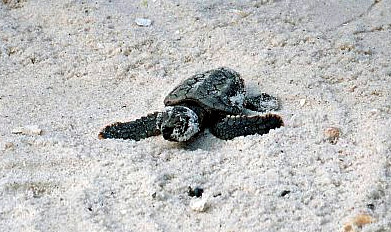In 2004, Hurricane Ivan flattened our beaches at the Santa Rosa area, Fort Pickens and Perdido Key. Roads were replaced in time for the 4th of July weekend in 2005. Shortly after, they were destroyed again in Tropical Storm Arlene and Hurricanes Dennis and Katrina. It's taking some time to determine the best way to rebuild the roads this time.
The Santa Rosa area road will be started in October of this year -- as a hurricane evacuation route, it is a priority. Only two bridges reach the mainland from this barrier island, one in Navarre and one in Pensacola Beach. At the moment, the two are separated by the washed out road in Santa Rosa. If we lose one of the bridges, people on one side of the island will need boats or ferries to get back to mainland Florida.
This leaves me on the beach, with a GPS backpack, wandering around looking for significant chunks of asphalt from the earlier roads. It's not hard -- there are lots of fields, planks, piles, virtual mountains even, of asphalt strewn throughout the park. The road crews will remove everything larger than a brick, so I must locate each of these pieces on my GPS. It means lots of walking in the still hot sun, lots of standing still waiting for satellite fixes, and hours of boredom as my brain screams to do a little work.

There are some areas that are too sensitive for road crews. When the road washed out, new wetlands were created. These marine nurseries and grass flats serve as a buffet for migrating and wintering shorebirds, create habitat for spawning crabs and fish, filter contaminants and nutrients out of the water, and act as a sponge, absorbing water as tides rise and storms threaten. They are a great resource economically, in the food chain and in natural coastal protection. There are ten to twenty foot slabs of asphalt even here. Do I want to map them and invite machines in to tear up the delicate soil, uproot sea oats, Juncus and Spartina, and scatter the Piping Plovers and other birds feeding on the flats? It seems more appropriate to leave these asphalt mats to the erosive powers of wind, rain and sea, to be reclaimed by the birds and sand, and made part of a new salt march ecology. It's a tough call, but I think it's the right one. Thankfully, the decision really isn't up to me.
After three days of mapping on ATV and on foot, I'm looking forward to a day mapping tidelines and counting the hundreds of gulls, terns, sandpipers, herons and their friends that sit along the shore. If I'm lucky, I may even see a loggerhead hatchling or two...
















